2015 8th Grade Science Mid-term Exam

2015 8th Grade Science Mid-Term Exam
- 1.
Choose the term that best completes the statement:The term ____________ is applied to any substance that cannot be made simpler without changing its chemical make-up.
- A.
Element
- B.
Atom
- C.
Molecule
- D.
Substance
Correct Answer
A. Element -
- 2.
What forms when one substance dissolves another?
- A.
Solution
- B.
Solvent
- C.
Dissolution
- D.
Solute
Correct Answer
A. Solution -
- 3.
A substance that dissolves another substance is called a ____________?
- A.
Solvent
- B.
Solution
- C.
Dissolution
- D.
Solute
Correct Answer
A. Solvent -
- 4.
Identify the property of water that allows a water strider insect to walk on the water.
- A.
Surface Tension
- B.
Polarity
- C.
Capillary Action
- D.
Specific Heat
Correct Answer
A. Surface Tension -
- 5.
Water is a universal solvent because:
- A.
Water is polar and can dissolve more substances than any other liquid
- B.
Solutes are not polar molecules
- C.
Water is made up hydrogen and oxygen atoms
- D.
Water has a neutral pH
Correct Answer
A. Water is polar and can dissolve more substances than any other liquid -
- 6.
What is adhesion?
- A.
Waters ability to stick to other materials
- B.
Waters ability to stick to itself
- C.
Covalent bonds in water
- D.
Capillary Action
Correct Answer
A. Waters ability to stick to other materials -
- 7.
What is an atom?
- A.
The smallest part of an element that is a basic unit of matter
- B.
The unit measure of an element
- C.
Elements that make up molecules
- D.
Neutrons in the nucleus
Correct Answer
A. The smallest part of an element that is a basic unit of matter -
- 8.
Identify the statement that is correct about the number of protons and electrons in an atom:
- A.
The number of protons and the number of electrons in an atom are always equal.
- B.
The number of protons is always greater than the number of electrons in an atom.
- C.
The number of protons is always less than the number of electrons in an atom.
- D.
The number of protons and electrons equals the mass of an atom.
Correct Answer
A. The number of protons and the number of electrons in an atom are always equal. -
- 9.
What is a micelle?
- A.
A cluster of soap molecule beads
- B.
A hydrophobic end of a soap molecule
- C.
Soap polarity
- D.
A hydrophilic end of a soap molecule
Correct Answer
A. A cluster of soap molecule beads -
- 10.
What is a valence electron?
- A.
Electrons in the outer cloud of an atom
- B.
A negatively charge ion
- C.
A positively charge ion
- D.
Ionically bonded electrons
Correct Answer
A. Electrons in the outer cloud of an atom -
- 11.
What is an emulsion?
- A.
A mixture of liquids that do not dissolve in each other. A condition where one liquid is suspended within another liquid which is not soluble.
- B.
When one liquid repels another and is neutral.
- C.
When a solute dissolves in a solvent.
- D.
When a liquid solidifies.
Correct Answer
A. A mixture of liquids that do not dissolve in each other. A condition where one liquid is suspended within another liquid which is not soluble. -
- 12.
What is electronegativity?
- A.
How many electrons are in a valence.
- B.
The strength of an atoms' electrons.
- C.
The electrical charge of a polar molecule.
- D.
The exchange of electrons in ionic bonding.
Correct Answer
B. The strength of an atoms' electrons. -
- 13.
In this diagram, the e- represents:
- A.
The e- represents the covalent Hydrogen electron bond in this Hydrogen molecule.
- B.
The pair of e- represents the double covalent Hydrogen electrons in the Hydrogen molecule.
- C.
The pair of e- represents the ionic Hydrogen electrons in this Hydrogen molecule.
- D.
The e- represents the single shared Hydrogen electron in this Hydrogen molecule.
Correct Answer
A. The e- represents the covalent Hydrogen electron bond in this Hydrogen molecule. -
- 14.
Why are Hydrogen covalent bonds non-polar?
- A.
Hydrogen bonds are non-polar because electrons in the bonds between identical atoms (H-H) are shared uniformly. This means electrons spend equal amounts of time around each atomic center.
- B.
Hydrogen bonds are non-polar because protons in the bonds between identical atoms (H-H) are shared uniformly. This means electrons spend equal amounts of time around each atomic center.
- C.
Hydrogen bonds are non-polar because protons in the bonds between identical atoms (H-H) are not shared uniformly. This means electrons do not spend equal amounts of time around each atomic center.
- D.
Hydrogen bonds are non-polar because protons and electrons in the atom of identical atoms (H-H) are shared uniformly. This means electrons do not spend equal amounts of time around each atomic center.
Correct Answer
A. Hydrogen bonds are non-polar because electrons in the bonds between identical atoms (H-H) are shared uniformly. This means electrons spend equal amounts of time around each atomic center. -
- 15.
The water and air pressure lab:If the lab were done while climbing Mt. Everest, as altitude increases what happens?
- A.
As altitude increases, air becomes less dense and the air pressure decreases. The water would not shoot out of the container.
- B.
As altitude increases, air becomes more dense and the air pressure decreases. The water would not shoot out of the container.
- C.
As altitude increases, air becomes more dense and the air pressure increases. The water would shoot out of the container farther than in the classroom.
- D.
As altitude increases, air becomes less dense and the air pressure increases. The water would shoot out of the container farther than in the classroom.
Correct Answer
A. As altitude increases, air becomes less dense and the air pressure decreases. The water would not shoot out of the container. -
- 16.
Think about Mt. Everest. Complete this statement: As altitude increases, air becomes.......
- A.
less dense, decreasing atmospheric pressure.
- B.
More dense, increasing atmospheric pressure.
- C.
less dense, increasing atmospheric pressure.
- D.
More dense, decreasing atmospheric pressure.
Correct Answer
A. less dense, decreasing atmospheric pressure. -
- 17.
What did Ben Franklin's experiment with nonpolar substances accurately measure?
- A.
Ben Franklin accurately measured the thickness of a single-molecule thick layer of olive oil on water.
- B.
Ben Franklin accurately measured the pollution in the pond water caused by the olive oil.
- C.
Ben Franklin accurately measured the change in surface tension when olive oil was added to the pond.
- D.
Ben Franklin accurately measured the area of underwater visibility created by altered surface tension when oil was added to water.
Correct Answer
A. Ben Franklin accurately measured the thickness of a single-molecule thick layer of olive oil on water. -
- 18.
Which property of water is capillary action related to?
- A.
Adhesion
- B.
Cohesion
- C.
Surface Tension
- D.
Polarity
Correct Answer
A. Adhesion -
- 19.
Identify: a substance that is being dissolved is a _________________
- A.
Solute
- B.
Solution
- C.
Solvent
- D.
Insoluble
Correct Answer
A. Solute -
- 20.
Celery test: What property of water does the celery test model?
- A.
Capillary Action
- B.
Polarity
- C.
Surface Tension
- D.
Specific Heat
Correct Answer
A. Capillary Action -
- 21.
In the water pressure lab:What do you predict would happen to the water coming out of the container if the container holes were larger?
- A.
If the holes were larger, the volume of water flowing is greater, but slower with less pressure.
- B.
If the holes were larger, the volume of water flowing is less, but faster with more pressure.
- C.
If the holes were larger, the volume of water flowing is greater, faster and with more pressure.
- D.
If the holes were larger, the volume of water flowing is greater, faster and with less pressure.
Correct Answer
A. If the holes were larger, the volume of water flowing is greater, but slower with less pressure. -
- 22.
In the water pressure labs:What would you predict about the water coming out of the container if the container holes were made smaller?
- A.
Water comes out of the container faster, is under greater pressure and there is less volume of water in the flow.
- B.
Water comes out of the container faster, is under less pressure and there is greater volume of water in the flow.
- C.
Water comes out of the container slower, is under greater pressure and there is less volume of water in the flow.
- D.
Water comes out of the container slower, is under less pressure and there is less volume of water in the flow.
Correct Answer
A. Water comes out of the container faster, is under greater pressure and there is less volume of water in the flow. -
- 23.
Floating Paper Clip:Why does adding liquid detergent to the water change how the paper clip floats?
- A.
It breaks the polarity and therefore the surface tension
- B.
Liquid detergent is not soluble
- C.
It changes the pH
- D.
It changes the specific heat
Correct Answer
A. It breaks the polarity and therefore the surface tension -
- 24.
Choose the set of terms that identify an atoms' subatomic particles:
- A.
Protons, neutrons, electrons
- B.
Nucleus, protons, electrons
- C.
Nucleus, neutrons, protons
- D.
Nucleus, electrons, neutrons
Correct Answer
A. Protons, neutrons, electrons -
- 25.
In the water pressure lab, of the two containers and three holes:Which container and which container hole had the least amount of water coming out when the hole was un-taped?
- A.
Capped, top hole
- B.
Uncapped, top hole
- C.
Uncapped, middle hole
- D.
Capped, middle hole
Correct Answer
A. Capped, top hole -
- 26.
Identify the property of water that explains why water forms drops.
- A.
Cohesion causes surface tension
- B.
Polarity
- C.
Capillary action
- D.
Specific heat
Correct Answer
A. Cohesion causes surface tension -
- 27.
Choose the terms that best complete the statement:Identify the subatomic particle charges:
- A.
Protons (+) positive, Neutrons are neutral, electrons (-) negative
- B.
Protons are neutral, neutrons are the nucleus, electrons (-) negative
- C.
Protons (-) negative, neutrons (+) positive, electrons (-) negative
- D.
Protons (+) positive, neutrons (-) negative, electrons are neutral
Correct Answer
A. Protons (+) positive, Neutrons are neutral, electrons (-) negative -
- 28.
Identify the water property represented in this diagram:(Too zoom the image, either double tap or use 2 fingers spread to zoom)
- A.
Polarity
- B.
Specific heat
- C.
Universal solvency
- D.
Surface tension
Correct Answer
A. Polarity -
- 29.
Identify this chain:
- A.
This is a hydrocarbon chain of a soap molecule.
- B.
This is a food molecule chain.
- C.
This is an oxygen, hydrogen and carbon water molecule chain.
- D.
This is a soap molecule chain with sodium.
Correct Answer
A. This is a hydrocarbon chain of a soap molecule. -
- 30.
What is an ion?
- A.
An electrically charged particle (atom or molecule) whose charge is determined by the loss or gain of electrons.
- B.
An electrically charged particle (atom or molecule) whose charge is determined by the sharing of electrons.
- C.
An negatively charged particle (atom or molecule).
- D.
The electrically charged particles of Ca2+, Mg2+ presence in water.
Correct Answer
A. An electrically charged particle (atom or molecule) whose charge is determined by the loss or gain of electrons. -
- 31.
Ionic bonding allows atoms to have complete outer shells by:
- A.
Ionic bonding allow atoms to have complete outer shells by transferring electrons. Ionic bonding is when one or more electrons are removed from one atom and gained and attached to another atom. This results in positive and negative ions that attract each other.
- B.
Ionic bonding allow atoms to have complete outer shells by sharing electrons. Ionic bonding is when one or more electrons are shared from one atom with another atom. This results in a shared valence.
- C.
Ionic bonding is a chemical compound formed by the joining of two or more atoms.
- D.
An ionic bond forms a stable compound through the sharing and transfer of valence electrons.
Correct Answer
A. Ionic bonding allow atoms to have complete outer shells by transferring electrons. Ionic bonding is when one or more electrons are removed from one atom and gained and attached to another atom. This results in positive and negative ions that attract each other. -
- 32.
Ionic Bonding satisfies both atoms because.....
- A.
Ionic bonding is the trading or transfer of electrons from one atom to another that enables the atoms to have complete outer shells.
- B.
Ionic bonding removes weak electrons from one atom enabling another atom to have strong electronegativity in its outer shell.
- C.
Ionic bonding enables one atom to release an electron and vacate its outer shell.
- D.
Ionic bonding is the sharing of electrons of atoms that enable the atoms to have complete outer shells.
Correct Answer
A. Ionic bonding is the trading or transfer of electrons from one atom to another that enables the atoms to have complete outer shells. -
- 33.
Identify which property of water allows water to move against gravity.
- A.
Capillary Action allows water to move against gravity.
- B.
Surface tension allows water to move against gravity.
- C.
Cohesion allows water to move against gravity.
- D.
Universal solvency allows water to move against gravity.
Correct Answer
A. Capillary Action allows water to move against gravity. -
- 34.
Floating Paper Clip:Why does adding salt to the water change how the paper clip floats?
- A.
Salt makes the water more dense, increasing surface tension
- B.
Salt makes the water less dense, decreasing surface tension
- C.
Salt changes the specific heat of the water, breaking the surface tension
- D.
Salt changes the polarity of the water as it dissolves in it
Correct Answer
A. Salt makes the water more dense, increasing surface tension -
- 35.
Pepper and Soap Lab:Why did the pepper move to the sides of the Petri dish when the soap drop entered the water?
- A.
Where the soap enters the water it breaks the surface tension, causing the pepper to move to the sides of the dish where the surface tension is still strong enough to keep it afloat.
- B.
Where the soap enters the water the pepper scatters to avoid the soap micelles from surrounding it.
- C.
Pepper is hydrophilic, when the soap enters the water the pepper spreads out to stay attached to the water, repelling the soap.
- D.
Where the soap enters the water it breaks the adhesion between the pepper and the water causing the pepper to move to the sides of the dish where it can reattach to the water and float.
Correct Answer
A. Where the soap enters the water it breaks the surface tension, causing the pepper to move to the sides of the dish where the surface tension is still strong enough to keep it afloat. -
- 36.
What property of water makes it vulnerable to pollution?
- A.
Universal solvent
- B.
Polarity
- C.
Surface Tension
- D.
Capillary Action
Correct Answer
A. Universal solvent -
- 37.
This image shows two soda bottle streamsLook at this image to answer the question below.Soda bottle stream lab:The soda bottle has vertical cuts for the water to pour out.As the water exits the bottle it forms two individual streams. Identify the property of water that, with each pinch of your fingers, causes the water to combine and flow as one stream of water.
- A.
Cohesion causes the streams of water to combine with each pinch of your fingers to combine and flow as one stream of water.
- B.
Adhesion causes the streams of water to combine with each pinch of your fingers to combine and flow as one stream of water.
- C.
Polarity causes the streams of water to combine with each pinch of your fingers to combine and flow as one stream of water.
- D.
Surface tension causes the streams of water to combine with each pinch of your fingers to combine and flow as one stream of water.
Correct Answer
A. Cohesion causes the streams of water to combine with each pinch of your fingers to combine and flow as one stream of water. -
- 38.
Waters high specific heat has a great deal to do with regulating extremes in the environment.How does water's specific heat capacity help the fish in the pond?
- A.
Fish in this pond can live comfortably because the pond water specific heat capacity means the temperature of the water will stay relatively the same from day to night. The environment is relatively stable.
- B.
Fish in this pond can live comfortably because the pond water specific heat capacity means the temperature of the water will stay relatively warm from day to night. The environment is relatively stable.
- C.
Fish in this pond can live comfortably because the pond water specific heat capacity means the temperature of the water will stay relatively cool from day to night. The environment is relatively stable.
- D.
Fish in this pond can live comfortably because the pond water specific heat capacity means the density of the water will stay relatively the same from day to night. The environment is relatively stable.
Correct Answer
A. Fish in this pond can live comfortably because the pond water specific heat capacity means the temperature of the water will stay relatively the same from day to night. The environment is relatively stable. -
- 39.
Look at the map. Apply your knowledge and respond to the questions below.Just as living in a pond, lakes and oceans regulate the temperature ranges of the land masses near them. The average January temperature for Bismarck, North Dakota is -12º C. The average January temperature in Juneau, Alaska is -4º C. 1. Why is Bismarck, colder than Juneau when Juneau is farther north? 2. Which property of water applies?
- A.
1. Bismarck, North Dakota is located far inland and is a land locked area. Juneau, Alaska is located near the Pacific Ocean. Cities near or surrounded by water take longer to heat up or cool down than a landmass. Cities near the oceans will tend to have less change and less extreme temperatures than inland cities. 2. The property of water that applies is specific heat.
- B.
1. Bismarck, North Dakota is located far inland and is protected by the land. This helps it hold the heat. Juneau, Alaska is located near the Pacific Ocean at a higher latitude. This keeps it from getting warm. 2. The property of water that applies is specific heat.
- C.
1. Bismarck, North Dakota is located far inland and is close to the great lakes. This the temperature to be stable. Juneau, Alaska is located near the Pacific Ocean at a higher latitude and therefore the weather and temperature is less stable. 2. The property of water that applies is surface tension.
- D.
1. Bismarck, North Dakota is located far inland and is land locked. This causes the temperature to be stable. Juneau, Alaska is located near the Pacific Ocean at a higher latitude and therefore the weather and temperature is less stable. 2. The property of water that applies is specific heat.
Correct Answer
A. 1. Bismarck, North Dakota is located far inland and is a land locked area. Juneau, Alaska is located near the Pacific Ocean. Cities near or surrounded by water take longer to heat up or cool down than a landmass. Cities near the oceans will tend to have less change and less extreme temperatures than inland cities. 2. The property of water that applies is specific heat. -
- 40.
Refer to the diagram above and apply your knowledge.What changes as a water molecule cools?
- A.
Due to the slightly charged polar ends in a water, in a liquid form of water, Hydrogen bonds slip and slide past each other constantly forming bonds, breaking and reforming bonds. When water cools to form ice the Hydrogen bonds in the water molecule slow down, line up and become stable.
- B.
Due to the heavily charged polar ends in a water molecule, in a liquid form of water, Oxygen's strong bonds with Hydrogen make the molecule rigid. When water cools to form ice the water molecules slow down, line up and become stable.
- C.
The polar attraction between Hydrogen and Oxygen make water cohesive in a liquid form of water. Cohesion changes with temperature. As water cools to form ice the water molecules become less cohesive.
- D.
Hydrogen and Oxygen slip and slide past each other constantly forming bonds, breaking and reforming bonds. When water cools to form ice the Hydrogen and Oxygen re-bond causing the water molecule to slow down, line up and become stable.
Correct Answer
A. Due to the slightly charged polar ends in a water, in a liquid form of water, Hydrogen bonds slip and slide past each other constantly forming bonds, breaking and reforming bonds. When water cools to form ice the Hydrogen bonds in the water molecule slow down, line up and become stable. -
- 41.
The atoms of each element have a unique number of protons in their nuclei.This unique number of protons is called the:
- A.
Atomic number
- B.
Atomic mass
- C.
Subatomic particles
- D.
Nucleus
Correct Answer
A. Atomic number -
- 42.
What makes valence electrons different from other electrons?
- A.
Being in the outer shell, valance electrons can be shared or transferred (removed from or attached to) other atoms.
- B.
Being in one of an atom's core shells, valance electrons are shared or transferred (removed from or attached to) within an atom.
- C.
A valence electron is ionic and can be a cation or an anion.
- D.
A valence electron determines the electronegativity of an atom.
Correct Answer
A. Being in the outer shell, valance electrons can be shared or transferred (removed from or attached to) other atoms. -
- 43.
Refer to the diagram above:What causes the water molecule to encircle the Sodium Chloride solute?
- A.
The slightly negative side of the water, H2O, molecule is Oxygen. The negative Oxygen is attracted to the positive Sodium (Na+) ion of the Sodium Chloride molecule. The slightly positive side of the H2O, molecule is Hydrogen. The positive Hydrogen is attracted to the negative Chloride (Cl-) ion of Sodium Chloride. This attraction separates each Na+ Cl- ion from each other. As the water molecules encircle ions on each polar side and surrounds each ion, a hydration shell forms preventing the ions from re-bonding, dissolving the salt.
- B.
The slightly negative side of the water, H2O, molecule is Hydrogen. The negative Hydrogen is attracted to the positive Sodium (Na+) ion of the Sodium Chloride molecule. The slightly positive side of the H2O, molecule is Oxygen. The positive Oxygen is attracted to the negative Chloride (Cl-) ion of Sodium Chloride. This attraction separates each Na+ Cl- ion from each other. As the water molecules encircle ions on each polar side and surrounds each ion, a hydration shell forms preventing the ions from re-bonding, dissolving the salt.
- C.
The slightly positive side of the water, H2O, molecule is Oxygen. The positive Oxygen is attracted to the negative Sodium (Na-) ion of the Sodium Chloride molecule. The slightly negative side of the H2O, molecule is Hydrogen. The negative Hydrogen is attracted to the positive Chloride (Cl+) ion of Sodium Chloride. This attraction separates each Na+ Cl- ion from each other. As the water molecules encircle ions on each polar side and surrounds each ion, a hydration shell forms preventing the ions from re-bonding, dissolving the salt.
- D.
The slightly positive side of the water, H2O, molecule is Oxygen. The positive Oxygen is attracted to the positive Sodium (Na+) ion of the Sodium Chloride molecule. The slightly negative side of the H2O, molecule is Hydrogen. The negative Hydrogen is attracted to the negative Chloride (Cl-) ion of Sodium Chloride. This attraction separates each Na+ Cl- ion from each other. As the water molecules encircle ions on each polar side and surrounds each ion, a hydration shell forms preventing the ions from re-bonding, dissolving the salt.
Correct Answer
A. The slightly negative side of the water, H2O, molecule is Oxygen. The negative Oxygen is attracted to the positive Sodium (Na+) ion of the Sodium Chloride molecule. The slightly positive side of the H2O, molecule is Hydrogen. The positive Hydrogen is attracted to the negative Chloride (Cl-) ion of Sodium Chloride. This attraction separates each Na+ Cl- ion from each other. As the water molecules encircle ions on each polar side and surrounds each ion, a hydration shell forms preventing the ions from re-bonding, dissolving the salt. -
- 44.
Water as a universal solvent: Identify which group of substances are all soluble:
- A.
Ammonia, salt, dishwashing liquid, sugar, vinegar.
- B.
Vinegar, salt, sugar, glue, dishwashing liquid.
- C.
Vinegar, salt, sugar, hand lotion, dishwashing liquid.
- D.
Vinegar,salt, dishwashing liquid, vaseline, sugar.
Correct Answer
A. Ammonia, salt, dishwashing liquid, sugar, vinegar. -
- 45.
What characteristic of water explains why it has many unusual properties?
- A.
Water is a polar molecule.
- B.
Water is a nonpolar molecule.
- C.
Water molecules do not have electrically charges particles.
- D.
Water is a universal solvent.
Correct Answer
A. Water is a polar molecule. -
- 46.
Identify: At the surface of a liquid, when water molecules absorb enough energy to change to a gas, the water molecules______________
- A.
Evaporate
- B.
Condense
- C.
Liquify
- D.
Solidify
Correct Answer
A. Evaporate -
- 47.
Water Pressure Lab: Observe these containers:What is the greatest source of the pressure exerted on the water?
- A.
Air
- B.
Gravity
- C.
Water
- D.
Surface tension
Correct Answer
A. Air -
- 48.
When in the shower: What property of water causes it to 'catch' and 'pull' together along the shower wall?
- A.
Surface tension of the water
- B.
Adhesion of the water
- C.
Polarity of the water
- D.
Specific heat of the water
Correct Answer
B. Adhesion of the water -
- 49.
What is a hydrocarbon?
- A.
A molecule of hydrogen and carbon, like those that make up waxes and oils
- B.
A molecule made up of hydrogen and carbon micelles
- C.
A water molecule that bonds with carbon
- D.
A soap molecule of hydrogen and carbon
Correct Answer
A. A molecule of hydrogen and carbon, like those that make up waxes and oils -
- 50.
Choose the best response to complete this statement:What is an elements' relationship to an atom?
- A.
Elements are composed of atoms that are made of identical particles
- B.
Elements are composed of atoms of different kinds of particles
- C.
Elements combine to make atoms
- D.
Atoms are made up of subatomic particles
Correct Answer
A. Elements are composed of atoms that are made of identical particles -
Quiz Review Timeline +
Our quizzes are rigorously reviewed, monitored and continuously updated by our expert board to maintain accuracy, relevance, and timeliness.
-
Current Version
-
Mar 22, 2022Quiz Edited by
ProProfs Editorial Team -
Dec 12, 2015Quiz Created by
Rhaveno
 Back to top
Back to top



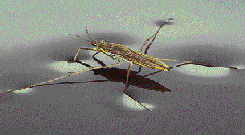
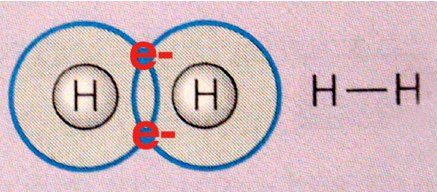
.jpg)
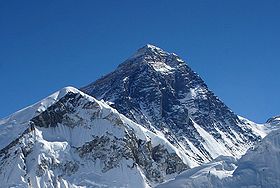
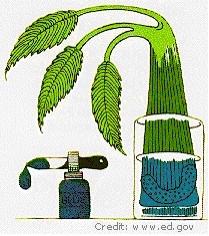
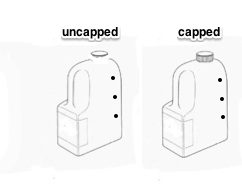
.png)
.png)

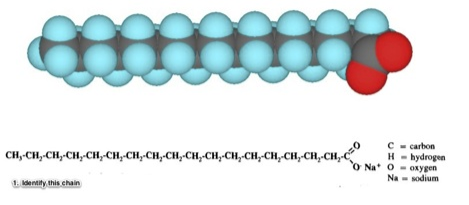


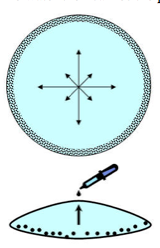

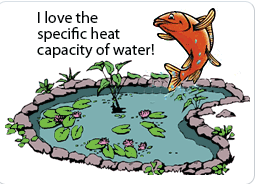
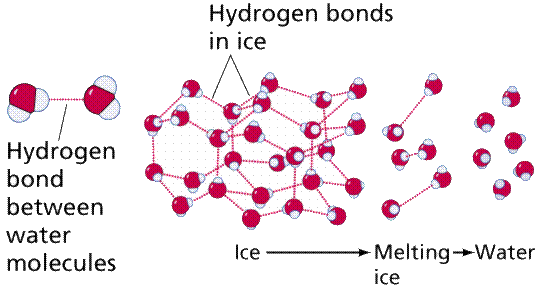

.png)